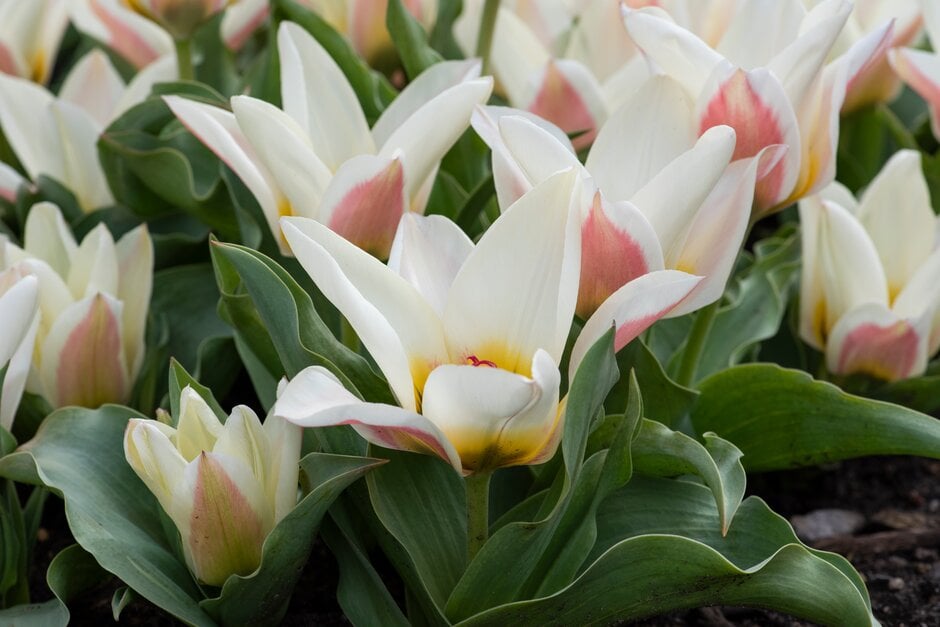Tulipa 'Serano' (14)
tulip 'Serano'
A dwarf, bulbous perennial to 30cm tall, with green foliage and multiple pale pink flowers on each stem, with creamy-white edges which open in the sunshine to reveal a yellow and black centre. Flowers appear from mid to late spring. Ideal for rock gardens due to its compact habit
Size
Ultimate height
0.1–0.5 metresTime to ultimate height
1–2 yearsUltimate spread
0–0.1 metreGrowing conditions
Moisture
Well–drainedpH
Acid, Alkaline, NeutralColour & scent
| Stem | Flower | Foliage | Fruit | |
| Spring | Pink Cream White | Green | ||
|---|---|---|---|---|
| Summer | ||||
| Autumn | ||||
| Winter |
Position
- Full sun
- Partial shade
Aspect
South–facing or West–facing
Exposure
Sheltered Hardiness
H6Botanical details
- Family
- Liliaceae
- Native to GB / Ireland
- No
- Foliage
- Deciduous
- Habit
- Columnar upright
- Potentially harmful
- Harmful if eaten, skin allergen. Wear gloves and other protective equipment when handling. Pets: Harmful if eaten, skin allergen - for further information and contact numbers regarding pets, see the HTA guide to potentially harmful plants
- Genus
Tulipa are bulbous perennials with characteristic flowers, in a wide range of colours, in spring
- Name status
Accepted
- Horticultural Group
- Greigii Group tulips have large, single, bowl-shaped flowers in the range yellow to red, often with contrasting margins, and flower in early and mid-spring; the grey-green leaves are usually mottled with purple or maroon
How to grow
Cultivation
Plant 10 to 15cm deep in fertile, well-drained soil with shelter from strong winds and protection from excessive wet. See tulip cultivation
Propagation
Propagate by lifting and separating offsets. See bulb propagation
Suggested planting locations and garden types
- City and courtyard gardens
- Cottage and informal garden
- Patio and container plants
- Cut flowers
- Flower borders and beds
Pruning
Deadhead after flowering; allow foliage to die down naturally
Pests
May be susceptible to slugs, aphids and stem and bulb eelworm; squirrels may eat the bulbs
Diseases
May be susceptible to tulip fire and bulb rot in poorly drained soil
Get involved
The Royal Horticultural Society is the UK’s leading gardening charity. We aim to enrich everyone’s life through plants, and make the UK a greener and more beautiful place.
